
views
Wrapping Shelves in Fabric
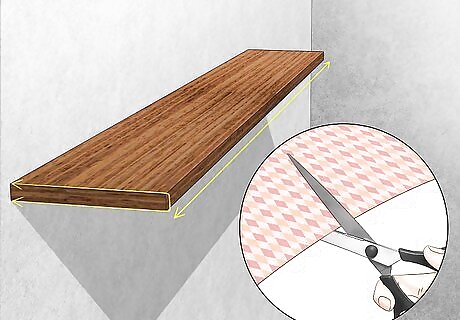
Cut a piece of fabric large enough to cover both sides of your shelf. Measure your shelf to find the length and width of both sides, then measure the front edge of the shelf as well. Cut out a piece of fabric that can fold over both sides and the front edge of your shelf. Cotton fabric works the best for this project, since it is thick and sticks well to glue. If you are using light colored fabric, paint your shelf the same color as your fabric so that it doesn’t show through. You can use patterned fabric for a fun accent piece, or solid-colored fabric for a more neutral shelf.

Paint Modge Podge onto 1 side of the shelf with a paint brush. Spread a thin layer of Modge Podge glue on top of the shelf. Make sure to cover the entire side so that your fabric sticks to it evenly. You can find Modge Podge at most craft supply stores. Modge Podge is a liquid glue, finisher, and sealer product that is usually used for decoupage projects. You can also spray the shelf with a low-tack adhesive so you're able to reposition the fabric.

Place your fabric on top of the Modge Podge. Line up the edges of the fabric with the edges of the shelf. Leave the end of the fabric hanging off the front of the shelf so you can wrap it around and underneath. Make sure you smooth down the fabric well with your hands after you place it on top of the Modge Podge. If your shelves are lined with a wooden rim or you don’t mind leaving the bottom part uncovered, you can trim your fabric so it only fits on the top part of the shelf.
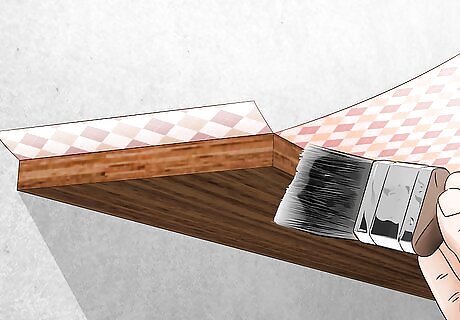
Apply Modge Podge onto the front edge of the shelf. Use your paint brush to add a thin layer of Modge Podge across the thin edge of the shelf. Try to paint it as evenly as possible so your fabric lays flat. Push your fabric up so it’s not hanging down on the side you are trying to Modge Podge.
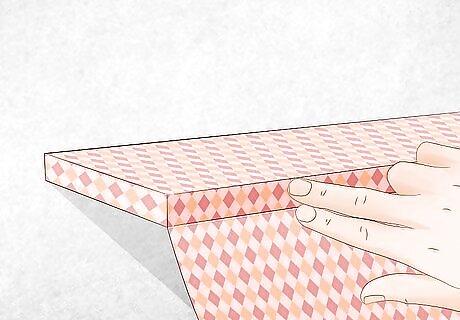
Smooth the fabric down onto the front edge of the shelf. Take the hanging part of the fabric and push it down onto your layer of Modge Podge. Use your hands to smooth out any lumps or bumps in the fabric so that it lays flat.Tip: If you need to get a stubborn lump or crease out, try using a credit card or ID to push the fabric flat.
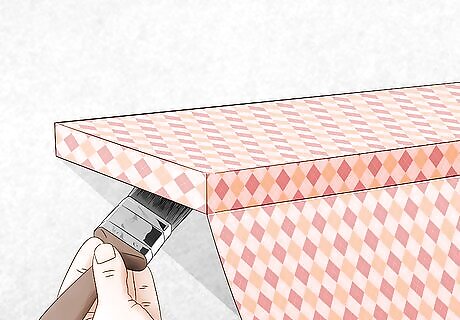
Paint Modge Podge onto the bottom side of the shelf. Flip your shelf over and cover the other side with a thin layer of Modge Podge. You only need a thin layer to make your shelf sticky, so you don’t need to add a lot. If your shelf is attached to the wall or a cabinet, carefully paint glue on the underside of the shelf without flipping it over.
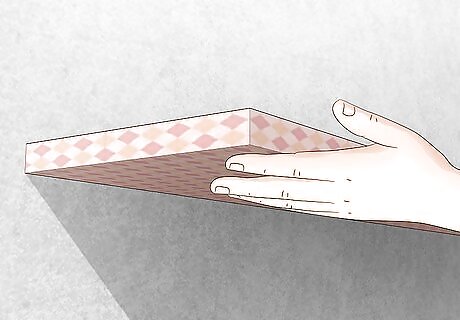
Smooth the fabric down onto the other side. Grab the rest of the fabric and pull it onto the side of your shelf that you just put Modge Podge on. Smooth it down with your hands to get rid of any creases or bumps. The bottom of your shelf will probably be the most visible when you hang it up, so make sure this side looks really good.
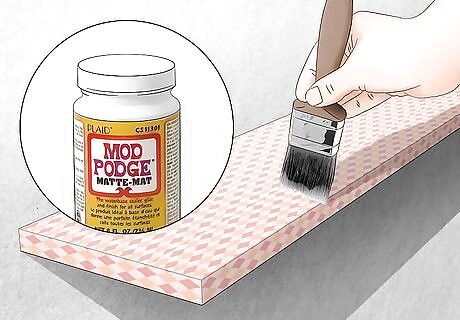
Add another layer of Modge Podge on top of all the fabric. Use a small paint brush or roller brush to apply Modge Podge on top of all the fabric you just glued down. Make sure there aren’t any puddles or pools of the glue so that it all dries evenly. If you’d like more protection for your shelves, you can add a thin layer of Modge Podge Hard Coat on top of the regular Modge Podge.

Let your shelves sit for 4 days to dry. Since your shelves have a lot of Modge Podge on them, they will need a while to dry. Leave them in a cool, dry place in your home to set before you hang them up or put books and knick knacks on them. Make sure the uncovered side of your shelves faces the wall when you hang them up so that you can’t see it.
Hiding Shelves with Fabric
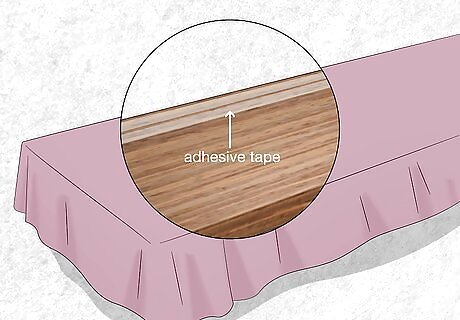
Attach fabric to your shelves with adhesive strips for an easy solution. Cut a piece of fabric so that it spans the height and width of your shelves. Attach 2 to 3 adhesive strips across the top of your shelves, then stick the top of your fabric onto them. Push the fabric to the side whenever you want to get something off the shelves.Tip: You can use a small ribbon to tie the fabric to the side if you need to uncover your shelves for a long period of time.
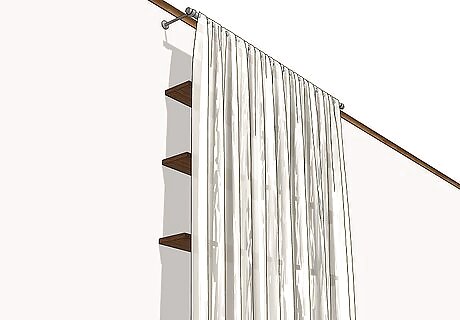
Use a tension rod to hide tall shelves with curtains. Find some curtains that are as tall as your shelves and then attach a tension rod to the very top. Thread your curtains over the tension rod and then slide them back and forth to cover and uncover your shelves. This is a great way to cover floor-to-ceiling shelves that are built into the wall.
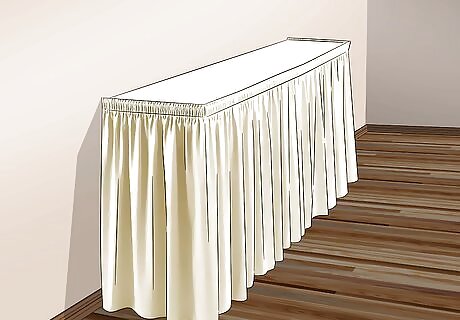
Cover low shelves with a table skirt for a cohesive look. Find a table skirt that is the same height as your shelves. Slide the top of the skirt onto the top of the shelves and let the excess fabric hang down over them. Adjust the table skirt so that it hangs evenly on all sides. Lift up the table skirt whenever you need to grab something off the shelves. Table skirts look great on TV stands and small dressers.
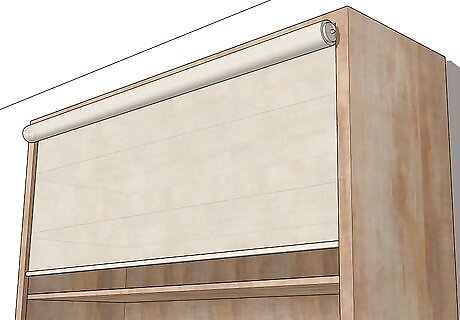
Disguise your closet shelves with roller shades to avoid bulky doors. Use a drill to attach the 2 shade mounts to either side of your closet. Hook the top part of the shades into the mounts with the shades facing outward, then let them unfold to hide your closet. If you need to, add a second shade to span the entire width of your closet. You can find roller shades at most home improvement stores. Roller shades work well for closets since you don’t have to worry about bulky doors getting in your way.















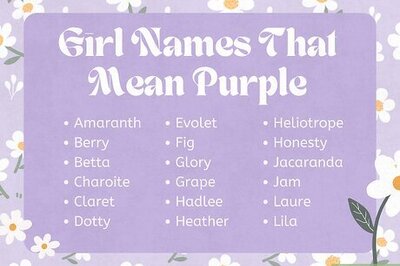
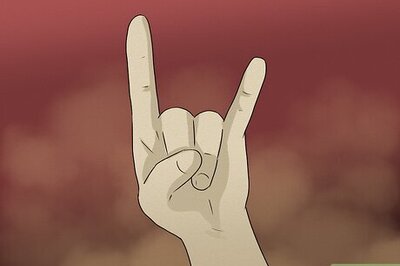
Comments
0 comment